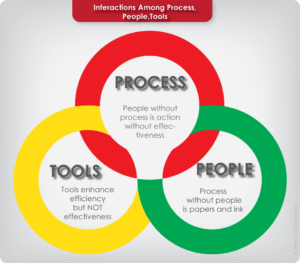It is common to hear the following comments in feedback to classes and workshops: “it would have been great to link the materials to our own internal way of doing things”. Another comments, “it would also be great if the examples and case studies are from our own work.”
We agree with both of the above comments – that would be ideal but ….
Background
First, let us highlight that there is a difference between training, education, and learning. It is a lengthy discussion, and here we refer the reader to our website to read our views on this subject.
Just a couple of comments here:
- To explain the difference between education and training, in a simplistic way, we are reminded of the following statement by an academic telling parents of school children “would you like me to educate your kids about sex or train them?” The reference here is that education is about knowledge whereas training is about practical hands-on experience.
- On the other hands, most define or link learning to competence. When we say ‘someone’ learned ‘something’ that means the learner has acquired the knowledge, has been trained on the given practices, and is competent in performing what they learning. In other words, learning requires proving competence.
The link to our subject
In a class environment – a teacher – instructor – can pass on the knowledge to those attending the class (Education). In a workshop, one can even apply some of the concepts (training). However, the challenge is in generic classes, that are NOT tailored – custom-fit to a given organization, the ‘learning’ is generic.
How can we enhance the learning? We believe in the principles of outcome-based learning, which means delivering workshops that can train people on how to do something, and giving them the opportunity in class to demonstrate competence … so they can take it back to work. The challenges here are numerous:
- Often – most people only attend certification based courses or want a 35 hours of training on the whole curriculum of project management topics. Therefore, it is not possible to allocate enough time to each subject – to explain the concept, practice in class, or take an exercise to a fruitful conclusion.
- In a public class – open to people from different companies; is another challenge in making the content tailored or custom-fit to a participants needs. In private (in-company classes) tailoring can be easier but …
- Even in a private class; unless the instructor is from the same industrial domain of the participants how would such an instructor be able to link the generic project management content to the participants own environment?
- The second challenge (from the introduction) is to use examples and links to internal processes. In this case, even if the instructor is from the same industry or domain, how can he or she knows inside practices?
Conclusion
Based on the above, we do have a gap between participants expectations and reality. Often, the instructor or the education provider end up being blamed for this gap. However, in reality, the ‘buyer’ is primarily responsible for such a gap.
 There is a solution. The solution is to blend training and learning with a bit of consultancy; or at least allow the instructor access to inside company information, and be allowing to authorize some funds to study the situation in order to develop the proper links between a course or workshop content and the company environment and business.
There is a solution. The solution is to blend training and learning with a bit of consultancy; or at least allow the instructor access to inside company information, and be allowing to authorize some funds to study the situation in order to develop the proper links between a course or workshop content and the company environment and business.
We have documented our ideas on our website on such a solution, yet the vast majority of organizations do not consider it and are satisfied with training only; training that does NOT deliver optimal solutions.
The bottom line – we need to link people with process with tools!

Trackbacks/Pingbacks